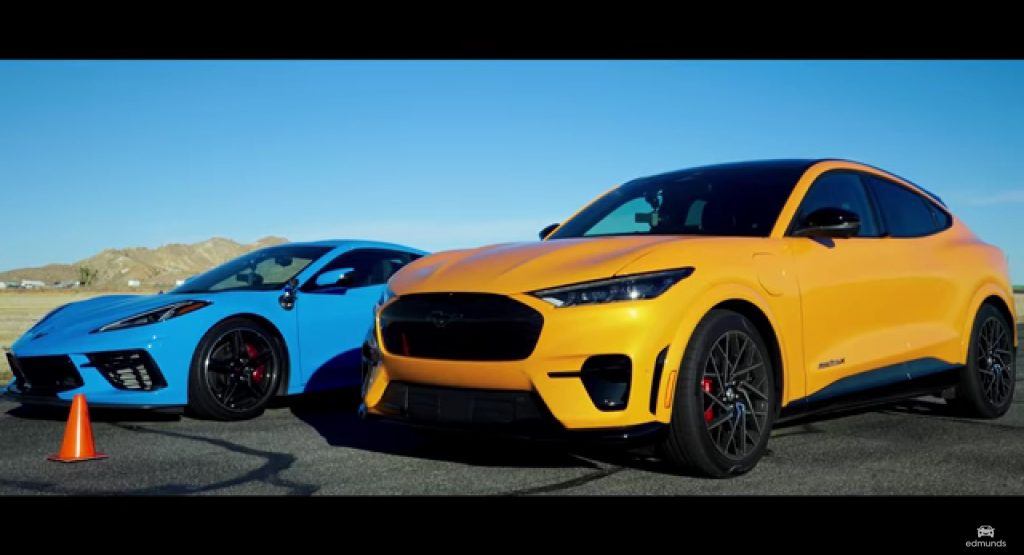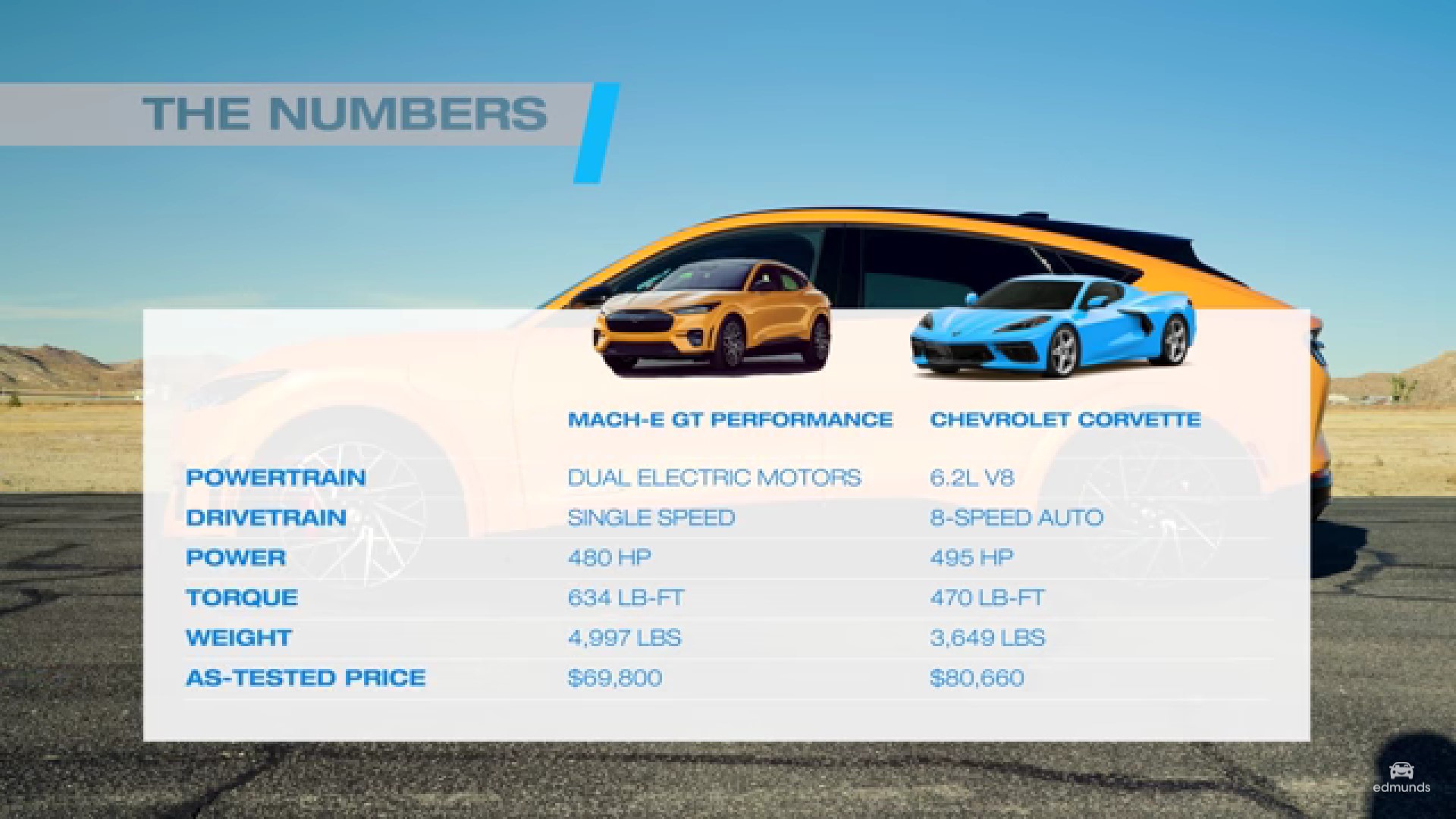Although some were aghast that the Mustang’s name started being used on an electric crossover, the Mach-E, at least in GT spec, is proving to be pretty quick off the line. But can it hold its own against America’s sports car?
Having previously taken on the Mustang Shelby GT500, the Mustang Mach-E GT has proven that it launches spectacularly well. In those races, the internal combustion car could only beat the EV once it got to higher speeds.
That, though, was a front-engine rear-wheel-drive car making 760 hp (770 PS/567 kW), which many have noted is a lot of power to be running through two wheels without much weight over them, which makes launches quite difficult.
Read Also: Can The Mustang Mach-E GT Performance Keep Up With The Mustang Shelby GT500?
For the eighth generation of the Corvette, Chevrolet decided to address that specific issue by placing the car’s engine in the middle. That has meant that, although the Corvette makes much less power than the Mustang Shelby GT500 (495 hp/502 PS/369 kW), it gets off the line in a hurry.
So what does trading a little high-end power for some off-the-line performance do in the battle of internal combustion sports cars against these new electric vehicles?
It actually makes the whole race closer. Unlike in the previous drag race, the Mustang Mach-E GT never jumps ahead of its internal combustion competitor, but it does manage to stick closer to it for longer.
That said, much like in the last race, once the Mustang Mach-E GT hits about 80 mph (129 km/h), it stops accelerating hard, allowing the Corvette to start running away. It’s a predictable result, but one that proves yet again that the Mustang Mach-E GT is an impressive performer – at least off the line.





